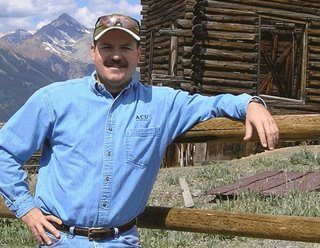Science or Slow Reporting?
(Someone had to be shot in order to conduct the test, was that you're journalistic intent? Typical non-shooting journalist waxing on about something they know nothing about. Enjoy!)
 Whacking someone with a pistol leaves a lot more than blood on your hands. It also leaves gunshot residue, and Brazilian forensic scientists have developed a simple but sophisticated way to check for the incriminating particles.
Whacking someone with a pistol leaves a lot more than blood on your hands. It also leaves gunshot residue, and Brazilian forensic scientists have developed a simple but sophisticated way to check for the incriminating particles.
In the upcoming October 2 issue of Forensic Science International, Jorge E. Souza Sarkis of the Institute of Energetic and Nuclear Research described a trial run of the test that is easy for cops to perform and very accurate.
Gun violence is a huge problem in Brazil. In São Paulo alone, police seize around 1,500 guns per month. Most of them are .38 caliber pistols. After a shooting, traces of gunshot residue on the hands of a suspect are often an extremely important bit of evidence.
Small amounts of the rare element antimony are found in most ammunition. When a gun goes off, a cloud of fine particles covers the hands of the shooter -- leaving behind a bit of the telltale metal.
A well-established method to check for gunshot residue is the Instant Shooter Identification Kit, which offers answers in seconds and is right about 90 percent of the time. Forensic labs can also examine skin swabs and clothing with an electron microscope to look for tiny gunpowder particles. By comparison, the new procedure is much more precise.
Sarkis and his partners recruited forty volunteers who infrequently handle guns. He invited them to take a single shot from one of three pistols -- 9mm and .40 caliber semi-automatics or a .38 revolver.
After each shot was fired, the researchers brushed each volunteer's hands with cotton swabs that had been dampened with a bit of an inexpensive chemical that can latch onto metals like antimony and wash them away from skin.
That is all a police officer would need to do -- swab each hand, bag the swabs, and send them to a crime lab.
To prepare their samples for analysis, the researchers dissolved the cotton swabs in pure nitric acid and then added some water. The brew went straight into a machine called an inductively coupled plasma mass spectrometer -- an instrument that completely destroys a sample and then precisely determines the levels of every single element. The researchers focused on the amount of antimony, barium, and lead on the volunteers' hands.
The level of antimony alone doesn't say much. Apparently, some people just happen to have a lot of the rare metal on their hands. But researchers can compare the level of antimony with the the level of barium and lead to figure out whether an individual pulled the trigger. If a volunteer had pulled the trigger, the level of antimony was unusually high relative to the other metals.
Maybe it's just me, but haven't the U.S. PDs been using these kits for years now...I know I've been watching this on CSI: Miami for at least three years.
-TMS


0 Comments:
Post a Comment
<< Home